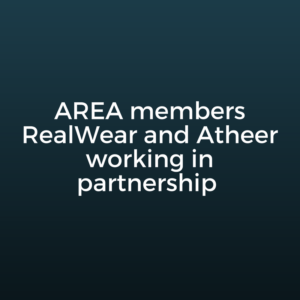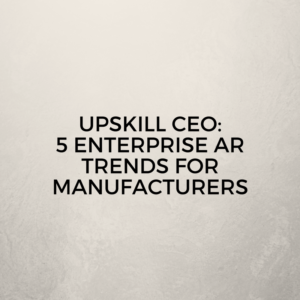The penetration of wearables enabled enterprises across the world to offer convenience, flexibility, and ease to its employees while performing daily tasks. Healthcare, banking, aerospace, and other industries have capitalized on opportunities that wearable devices provide. These devices can transform workflows and processes. Researchers from Ireland have been developing a wearable device to help caretakers remotely track dementia patients who wander. At Boeing, mechanics and engineers wear a headset, which is the AR-enhanced HoloLens, to build equipment and repair parts by working in collaboration with colleagues from different remote locations. Banking sector is also endeavoring to use wearable payment devices. Dutch Bank ABN Amro will test wearable technology to make payments. Blocks, a tech startup has developed a smartwatch for enterprises to monitor and collect data from their employees. The robust, low cost, and energy efficient wearables can change the way employees do their jobs. In its recent report on the Allied Market Research states that the market would grow at a CAGR of 38.8% from 2017 to 2023. The ongoing research and advancements outline the immense potential lying ahead.
Tracking dementia patients becomes easy for caretakers:
The healthcare sector is one of the leading sectors reaping benefits of advancements in enterprise wearable technology. Irish team of researchers have been leading a study conducted to design a wearable device for patients suffering from dementia. The device will help caretakers remotely monitor location and proximity of wandering patients. The research team has been focused on designing wearables for various stages of dementia. Researchers from the Telecommunications, Software and Systems Group (TSSG) at Waterford Institute of Technology have joined forces with partners in Ireland, Portugal, Switzerland, and Belgium for a 30-month project worth €2.5 million. The low cost and affordable device would enable caretakers to interact with patients remotely. The device aims to serve the needs of patients and caretakers as well. Giving instruction and guidelines through the system would enable caretakers to help wandering patients.
Boeing employees ease up their jobs with AR-enhanced headsets:
The aerospace sector determined the need to provide speed and safety to mechanics and engineers repairing parts in airplanes. Mechanics and engineers needed to spend so much time to get important papers and information to begin their work of repairing or replacing parts. This was a time-consuming process. The change in workflow to accelerate the repairing process and enable accuracy in work was the need of an hour.
Boeing, a leading market player in the aerospace industry, equipped its mechanics and engineers with augmented reality (AR) enabled HoloLens. They can repair parts and make necessary changes by wearing the AR-enhanced HoloLens headgear and working in collaboration with colleagues from different locations. Colleagues at remote location can map out exact specifications by viewing a hardware in front of them and suggest necessary changes and repairs. Employees experienced 30% decrease in the overall time required to finish a singular process. Moreover, they experienced 90% increase in the first-pass time. Brian Laughlin, IT Architect for Mobile Devices in the Commercial Aviation Services section of Boeing, said, “Safety and quality drives my need for having accurate, timely information. (With AR) We’re creating bionic people to help us be more effective at what we do.”
ABN Amro Testing Wearable Payment Devices:
The banking sector also dived into wearable technologies to find out new ways of carrying out banking activities. ABN Amro, the business bank headquartered at Amsterdam, Netherlands, will test the feasibility of wearable technology to make payments. At least 500 customers would wear wearable devices such as bracelets, watches, and rings in the trial. The bank collaborated with the wearable technology firm Digiseq and Mastercard. In a four-month trial, customers make payments with the help of wearables linked to their bank accounts. Then the bank will seek feedbacks from customers about their experience of using wearables to carry out operations and continuously optimize its systems during the trial. The customers in Netherlands have been adopting contactless payment ways enormously. At least 50% of total payments carried out in the country are contactless. This prompted banks to find innovative methods for payments. The use of contactless payment method will not be limited to mobile phones and bank cards only. Banks have been finding ways to implement near-field communication to allow payments.
Blocks to launch smartwatch for enterprises:
The acceptance of bring your own device (BYOD) in organizations is on the rise. BYOD devices have been helping employees improve their efficiency along with providing convenience. Blocks, the London-based tech startup, has realized the need to offer a customizable smartwatch equipped with mix and match features. Blocks, the company’s smartwatch with the same name, has a LCD display configuration and offers better performance with various hardware modules such as cameras, chargers, fingerprint scanners, and others. It is a modular system beneficial for enterprises to track and gather data from employees.
The manufacturers of enterprise wearables need to address the concerns regarding security. The strict data security measures need to be taken to ensure safety of client data. Wearables for enterprises will be proved game changers as they offer ease of use, speed up the workflow, and provide robustness. The ongoing research, vast scope for development, and advancement in technology would unlock the potential of enterprise wearables and change the way enterprises conduct their daily operations.









